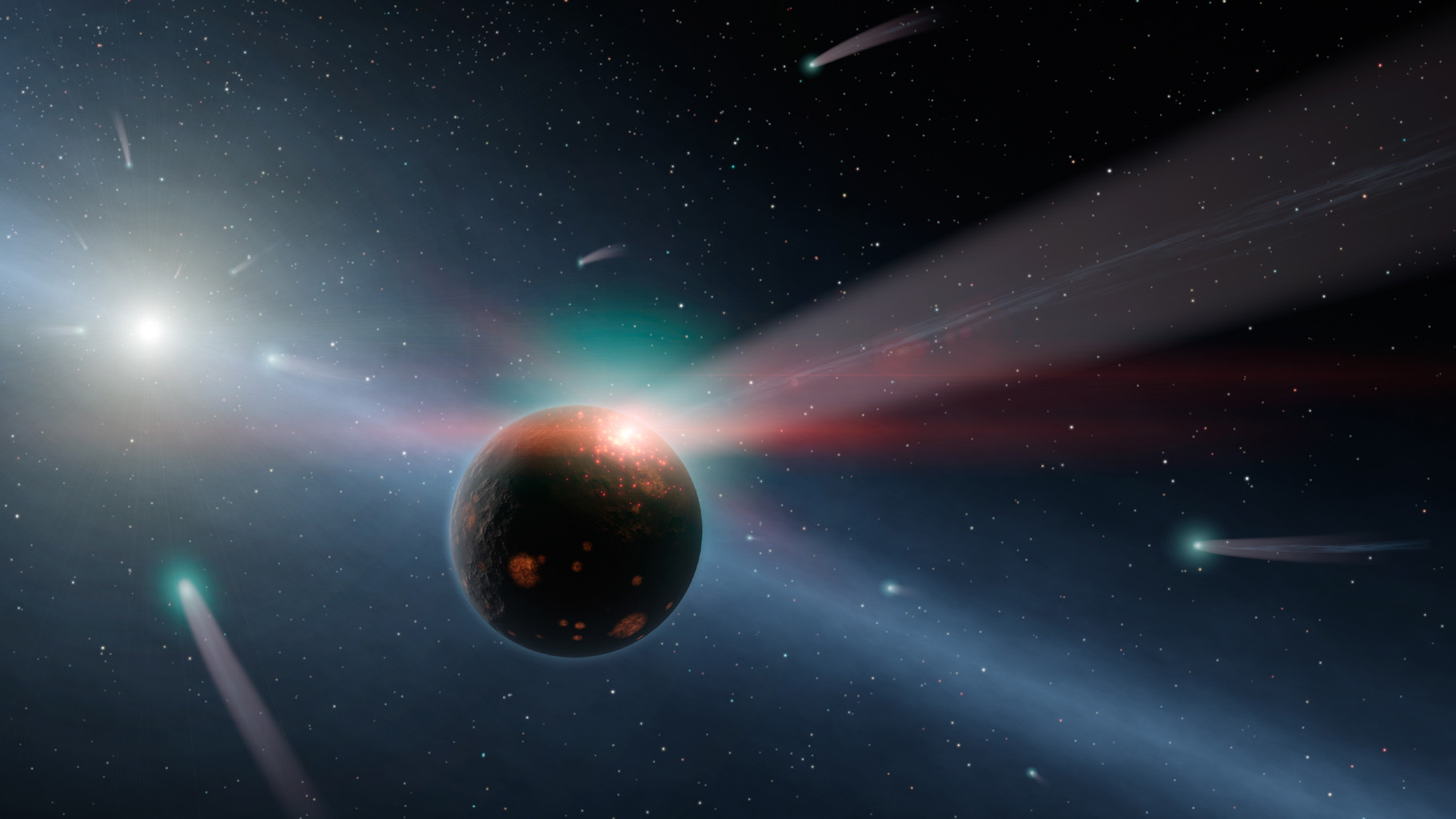
Comets, those icy and rocky bodies with the spectacular long tails of gas and dust, are common in our Solar System, with several thousand having been discovered so far. But what about other solar systems? Thousands of exoplanets are now being discovered, along with the first hints of exomoons, so it seems natural that comets should also exist in at least some of these alien solar systems. Now, NASA’s Kepler Space Telescope has indeed found the first good evidence for comets transiting their host stars.
The transits, thought to be caused by small comet-like bodies, were discovered for two stars in the Kepler data – KIC 3542116 and KIC 11084727. Evidence for comets orbiting other stars has been found before, but this is the first time they have apparently been seen transiting in front of their host stars, just like planets. From the new paper:
“In this work we reported the discovery of six apparent transits in KIC 3542116 that have the appearance of a trailing dust tail crossing the disk of the host star. We have tentatively postulated that these are due to between 2 and 6 distinct comet-like bodies in the system. We also found a single similarly shaped transit in KIC 11084727. Both of these host stars are of F2V spectral types.”


The findings of similar transits for at least two Kepler stars indicates that they may not be rare, that comets, just like planets, may be quite common in other solar systems. The three deepest transits found are all very small, with less than 0.1% of the stars’ light blocked during a transit. All of the transits were found during visual searches of the data, as opposed to computer searches, which strengthens the case that many more such occurrences are waiting to be discovered.
The authors of the new paper also make an interesting comparison to the star KIC 8462852 (aka ‘Boyajian’s Star’) which has attracted a lot of interest from astronomers lately for its weird and still-unexplained dips in brightness which don’t resemble any kind of transits or similar phenomena ever seen before. Some early theories suggested massive “comets” as one possible explanation, but the new paper seems to suggest that is unlikely:

“Finally, the deep dips in the flux of KIC 8462852 (aka ‘Boyajian’s Star’; Boyajian et al. 2016) are worth trying to relate to what is observed in KIC 3542116. By contrast, the largest flux dips in the former star reach 22% which is more than two orders of magnitude greater than the transits we see in KIC 3542116. Furthermore, the dips in KIC 8462852 can last for between 5 and 50 days, depending on how the beginning and end points of the dip are defined. These are one to two orders of magnitude longer than for the transits in KIC 3542116. Finally, we note that none of the dips in KIC 8462852 has a particularly comet-shaped profile. There have been a number of speculations about the origin of the dips in KIC 8462852, including material resulting from collisions of large bodies and moving in quasi-regular orbits (Boyajian et al. 2016); swarms of very large comets (Boyajian et al. 2016); and even a ring of dusty debris in the outer Solar System (Katz 2017). However, there is currently no compelling evidence for any of these scenarios.”
Be sure to “LIKE” AmericaSpace on Facebook and follow us on Instagram & Twitter!
SaveSave
SaveSave





